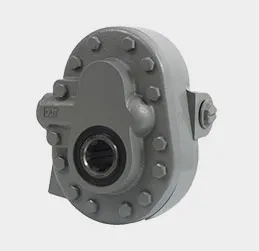Illustrative Examples of Products Made Using Sand Casting Techniques
Examples of Sand Casting Products
Sand casting, also known as sand mold casting, is one of the most widely used manufacturing processes for creating metal parts. The versatility and cost-effectiveness of sand casting make it an ideal choice for producing a wide array of products across various industries. This article explores some notable examples of sand casting products, highlighting the diverse applications of this technique.
One of the most common applications of sand casting is in the automotive industry. Engine blocks, cylinder heads, and transmission cases are frequently produced using this method. For example, an aluminum engine block is created through sand casting to provide the necessary strength while keeping the weight manageable. The intricate cooling passages and cylinder configurations can be achieved with precise molding techniques, ensuring optimal engine performance. Additionally, components such as oil pans and brackets are also manufactured using sand casting, contributing to the overall functionality and assembly of vehicles.
In the aerospace sector, sand casting plays a crucial role in producing components that must withstand extreme conditions. For instance, turbine casings and airframe components are often made using this process. The ability to create complex geometries and resilient materials allows manufacturers to produce parts that meet stringent safety and performance standards. Sand casting is particularly advantageous for producing prototypes and low-volume parts, which are typical in aerospace applications where every ounce of weight must be carefully considered.
examples of sand casting products

Another significant area where sand casting is utilized is in the construction industry. Cast iron and ductile iron products like manhole covers, pipe fittings, and architectural elements are commonly fabricated using sand casting. These products must endure significant wear and tear, and the durability offered by cast iron makes it an ideal choice. Manhole covers, for instance, not only need to withstand heavy loads but also must be produced in a way that maintains safety and reliability. Sand casting allows for the mass production of these heavy-duty components, ensuring they meet rigorous industry standards.
Additionally, sand casting finds its place in the artistic realm. Sculptors and artists often use the technique to create intricate sculptures and decorative items. The freedom to design complex shapes and textures makes sand casting a popular choice for artists. From custom trophies to large public art installations, the process allows for creative expression through metalwork. The sand casting technique can facilitate unique designs that are difficult to replicate with other manufacturing methods.
In the realm of heavy machinery, products such as pump housings, gear cases, and frames are also manufactured through sand casting. These components must operate under substantial loads and adverse conditions, proving the effectiveness of sand casting in delivering robust solutions. The ability to produce large parts in various metals makes sand casting a go-to method for many manufacturers in this field.
In conclusion, sand casting is a versatile and efficient manufacturing method that is employed across numerous industries. From automotive and aerospace to construction and art, the examples of sand casting products illustrate its broad applicability and functionality. The process allows for the creation of complex shapes, durability, and cost-effectiveness, making it a preferred choice for many engineers and manufacturers. As technology advances, the techniques used in sand casting will continue to evolve, expanding the possibilities for new applications and products in the future. Whether for practical components or artistic creations, sand casting remains a cornerstone of the manufacturing world, showcasing the intersection of art and engineering.
-
Crawler Drilling Rig - Baoding Hairun|Confined Space Drilling&Mine SafetyNewsAug.15,2025
-
Drill For Confined Spaces-Crawler Mounted Drill Rig | Crawler Drill Rig for SaleNewsAug.15,2025
-
Premium OEM Auto Parts & Stamping - Reliable ManufacturersNewsAug.15,2025
-
Crawler Drilling Rig for Confined Spaces-Baoding Hairun MachineryNewsAug.15,2025
-
Drill For Confined Spaces - Baoding Hairun Machinery And Equipment Trading Co., Ltd.NewsAug.15,2025
-
Advanced Crawler Drilling Rig - Baoding Hairun Machinery | Underground Mining SolutionsNewsAug.14,2025















